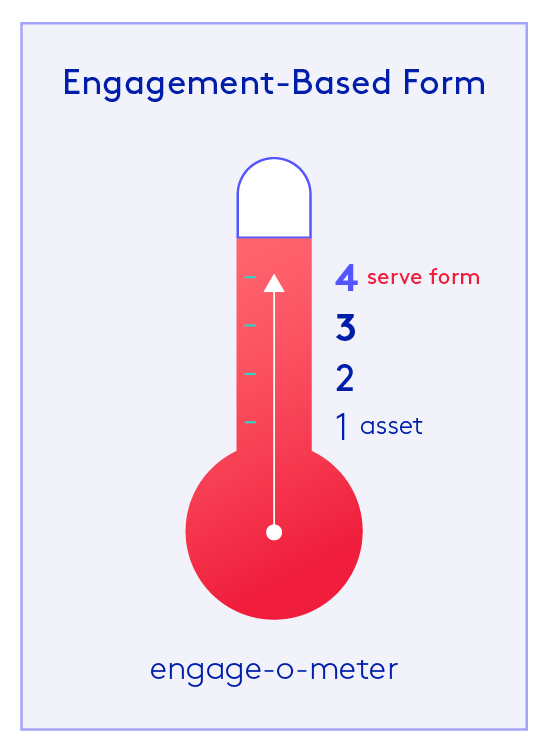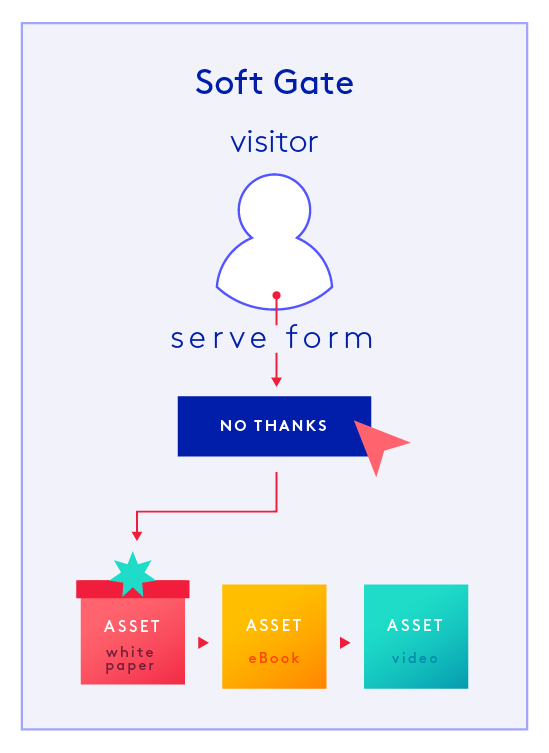Buying Friction Series: Confessions of a Form-Hating Marketer
(Originally published Feb 7, 2018. Updated May 14, 2019)
I’m a marketer at a B2B technology company and I hate forms. There, I said it.
I hate running into gated content when I’m researching a topic for something I’m writing. Typically, I’ll bypass the form by popping the report title into Google’s advanced search and accessing the PDF directly. It works most of the time. If it wasn’t literally my job to find this information, I wouldn’t bother. I’d just move on.
I hate being interrupted by a pop-up as soon as I land on certain blogs or industry publications. I roll my eyes every time I click on a button with incredibly insulting copy; something along the lines of, “No, I don’t want to learn how to do that one thing that will make my business ridiculously successful because I’m a huge idiot.”
I hate that many of my fellow marketers still believe forms and gated content represent a value exchange between their company and its potential customers. In exchange for this “high value” piece of content (must be high value because it’s long and a PDF, right?), they must give you their name, email address, phone number, job title, company name, industry, and revenue. This entitled way of thinking is a trap. It doesn’t help your business and it certainly doesn’t help your customers.
I hate when I do take the time to fill out a form and then I end up at some horrible dead end — either the PDF itself or, even worse, a confirmation page that tells me to check my email for a link to the content. 1) That is a horrible experience and 2) what a wasted opportunity.
Most of all, I hate that companies say they care about the customer experience and want to improve people’s lives through their content and eventually their product/service. In reality, all they really care about is gating that content so they can dump as many mediocre leads into the top of the funnel as possible. Those leads are not “hand raises”. They’re just forced form fills. They don’t mean anything. Not really.
I hate these things because they represent barriers between me and the information I want. These barriers are experienced by many B2B marketers today and they represent bumps in the road along their buyer’s path-to-purchase. These bumps do nothing but cause friction and slow them down, interfering with any momentum gained through genuine interest.
The great gate debate
So, why not get rid of all the friction-causing forms between the content and the people who want to read it? Why not blindly trust that if we enable potential customers to drive their own buying journey they will find the information they need to make a decision?
BUT WAIT! I can hear you yelling through the screen. I STILL NEED TO GENERATE LEADS SO MY SALES TEAM CAN TURN THEM INTO REVENUE. HOW DOES THAT WORK IF WE GET RID OF EVERY SINGLE FORM???
So, to gate or not to gate? That is the question. It’s been asked on marketing teams around the world for years, and it’s this struggle that continues to paralyze marketers from making meaningful changes to their form strategy today.
The reality is, there’s no straightforward answer to the “Great Gate Debate.” There are shades of grey, to be sure. While some, like Moz, have gone the way of ‘no gates ever,’ that’s obviously unrealistic for many marketing teams. It’s going to work a little bit differently at each organization depending on your technology stack, your lead-to-revenue process, and your team’s tolerance for change.
*Please note: PathFactory used to be LookBookHQ
But we do need to change our gating ways
As marketers, our job should not be to generate clicks and form fills. Clicks and form fills don’t generate revenue. Our job is to educate buyers and help them find the right information at the right time in their own unique buying process. And forms can act as a barrier to that, adding friction to a prospect’s journey and slowing them down. Qualified, educated buyers generate revenue, so we should be making it as easy as possible for the right people to access the information they need to make informed purchase decisions.
It’s not only what we should be doing, but it’s also something our buyers require of us. According to a 2017 Demand Gen Report Survey of Content Preferences, 71% of B2B buyers want content to be easier to access. It’s clear that it’s time for marketing to get out of the way of their buyers and start helping them buy. This is the fundamental shift in mindset that needs to happen in B2B marketing today—and it’s called ‘buyer enablement.’ Buyer enablement is all about removing all the pesky friction slowing buyers down along their path-to-purchase and making it easier for them to buy. A huge culrprit of this friction is forms. So how can we do it better?
Here are 3 buyer enablement friendly approaches to incorporating forms into your marketing strategy that won’t totally annoy and frustrate your buyers.
Friction-free form strategies
When it comes to your form strategy, it’s more helpful (and more comfortable for those carrying demand gen targets on their shoulders) to think of it as a spectrum rather than an on-off switch.
Progressive profiling
Start by making your forms a bit smarter with progressive profiling. Throwing a 10-field form at a prospect you’ve only just started developing a relationship with is like asking for marriage on a second date! Too much, too soon. Try only asking for the information you need when you need it. More importantly, it allows you to prove to your prospect that you can offer value to them in exchange for their information.
Once you have the bare minimum, you can consider using a tool like Datanyze to fill in the blanks rather than asking for more information.
Engagement-based forms
These gates appear only after a prospect has reached a certain engagement threshold with your content. The idea behind engagement-based forms is to only show those—ideally super short—forms to unknown visitors who spend a certain amount of time engaging with your content.
Once a prospect has engaged with several pieces of content for long chunks of time, a form could be the next best asset to serve as they may need to talk to sales or experience a demo. In that case, an engagement-based trigger could be just what you’re looking for. This means that after x number of minutes spent with content, or after x pieces of content have been viewed, your prospect will be presented with a form.

Learn more about engagement-based offers here.
Soft-gating
A soft gate allows visitors to get a taste of the content before being asked for information. Soft gating ensures only the most interested prospects are served your form. By submitting the form they’re saying “I like what I’ve tasted so far… now give me the main course…” This can look like a form that appears after a visitor has spent a minimum threshold of time on a piece of content or after they have consumed a minimum amount (i.e. 50% of a whitepaper.)
You can make a soft gate even softer by allowing your visitors to dismiss it entirely. That way, the form seems like a light suggestion rather than an order and the prospect feels like they’re in control.

Learn more about the pros and cons of soft-gating here.
Ultimately, in the great gate debate, there is a happy medium between collecting the data your team wants and giving your prospects the seamless experience they expect. The right formula will be a little different for every organization, but the important thing is to make sure your forms are serving their purpose rather than creating friction that slows your buyer’s journey—it’s about striking a balance. When you can achieve that, you create a win-win situation for your customers and your organization.
The Buying Friction Series reveals how B2B marketers end up preventing their buyers from getting the information they need to buy. They do this by creating various points of friction throughout their buyers’ journeys that slow them down along their path-to-purchase. The Buying Friction Series helps B2B marketers identify and remove these points of friction to better enable buyers to make smarter, faster purchase decisions.
No comments yet